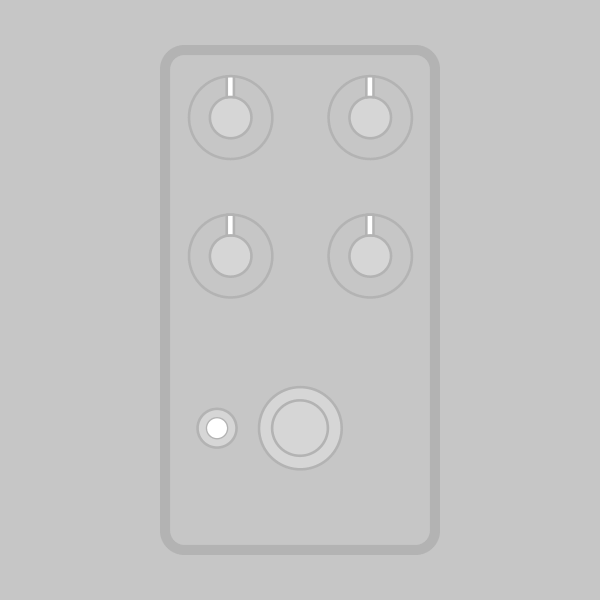
The Comet Vintage Distortion is a clone of the classic orange BOSS® DS-1 Distortion, one of their earliest compact effects in continuous production since 1978.
The DS-1’s design is an amalgamation of a few different ideas. The initial transistor gain stage is very similar to the Big Muff, as is the tone section with its bass/treble balance control. The IC gain stage followed by diode-to-ground hard clipping is similar to early op-amp distortion circuits like the MXR Distortion+ or Pro Co RAT.
During the past four decades, it has undergone several revisions. The basic schematic structure has stayed the same throughout its production, but when the original IC was discontinued in the early ‘90s, the op-amp gain stage was redesigned to use a standard dual op-amp. Previously it had used a Toshiba TA7136P special-purpose “RIAA preamp” that was technically not even a true op-amp, so this necessitated several changes. They also re-voiced the circuit at the same time, reducing the bass and increasing the treble slightly.
The result is that there is a significant difference between the “pre-1994” and “post-1994” versions of the circuit. The pre-’94 version remains highly regarded, while the post-’94 circuit is responsible for the DS-1’s reputation as a poor-quality beginner’s pedal. The good news is that the voicing changes are fully reversible, and it’s possible to get the post-’94 dual op-amp version to sound just as good as the pre-’94 version with a handful of capacitor changes.
The Comet is based on the dual op-amp version of the circuit. The default build calls for a few parts substitutions to make it nearly identical to the pre-’94 circuit. If you want to use the TA7136P chip for an exact replica of the pre-’94 DS-1, the legacy version of the Comet is still available and supports either configuration. This updated version drops support for the old IC because it’s almost impossible to find today and the build process is much more streamlined without the option.
The classic orange DS-1 Distortion has been in continuous production since 1978. It was part of BOSS’s second release of compact guitar pedals, after the OD-1 OverDrive, SP-1 Spectrum and PH-1 Phaser which first hit shelves in 1977. The other pedals in this second release include the CS-1 Compressor, GE-6 Graphic Equalizer and TW-1 Touch Wah. As a point of trivia, of all the BOSS pedals released in the 1970s, the DS-1 is the only one still in production. The next one to survive is the SD-1 Super Overdrive from 1981.[1]
The circuit remained unchanged until 1994, when it was modified to use the new PSA adapter instead of the old ACA. In the process, the IC was changed from a single to a dual—still the SIL (single-in-line) form factor, but the circuit was also revised to take advantage of this newly-available op amp, and a unity-gain buffer was placed in front of the adjustable gain stage. They re-voiced the circuit to take advantage of this change.
The post-’94 version is universally considered inferior to the original. This is BOSS’s cheapest pedal on the market at a typical price of USD $40, and so they have continually reduced the quality of the components in order to maintain this price point. However, while some of the ICs used after 1994 were of low quality, since 2006 they’ve been good, and it’s primarily the component changes that are responsible for the tonal differences in the two circuits. A post-1994 DS-1 can easily be made to sound just as good as the pre-’94 version with some modifications.
One more point to make in this section—often the original version is referred to as “MIJ” or Made in Japan, while the modern version is called “MIT” or Made in Taiwan. This is not exactly accurate since BOSS switched production to Taiwan in 1988 and the DS-1 was unchanged until 1994. This means there are six years’ worth of Taiwanese versions that would still be considered the “good ones” and are no different from the Japanese units. The country of production is not an accurate way of deciding whether it’s good or bad—it’s most accurate to call them “pre-1994” and “post-1994”.